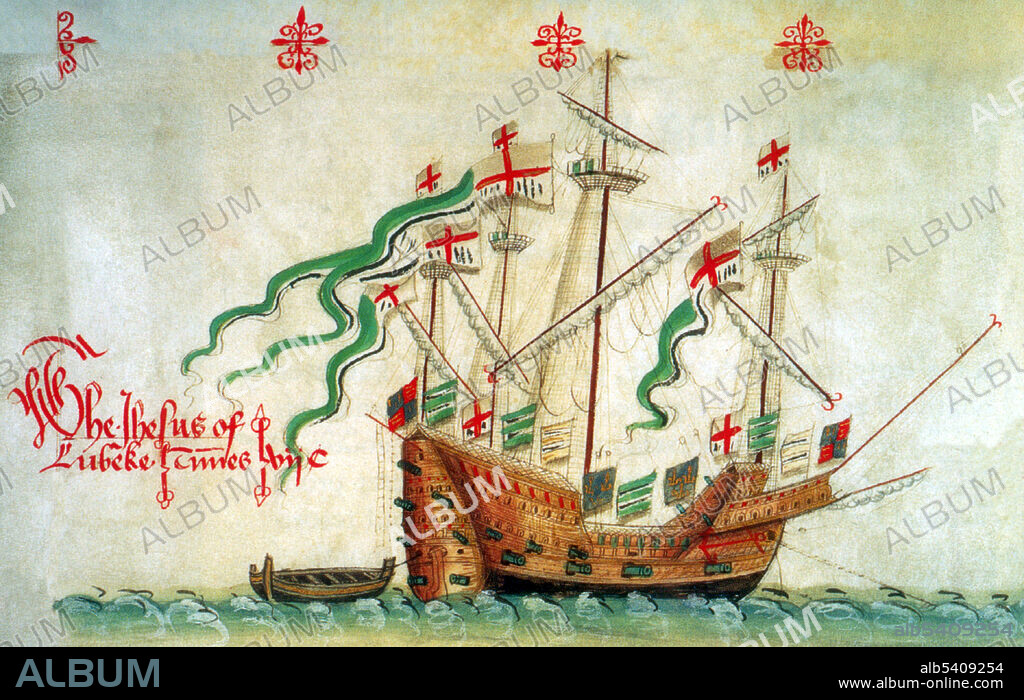alb5409254
Jesus of Lubeck, English Slave Ship, 16th Century

|
Añadir a otro lightbox |
|
Añadir a otro lightbox |



¿Ya tienes cuenta? Iniciar sesión
¿No tienes cuenta? Regístrate
Compra esta imagen

Título:
Jesus of Lubeck, English Slave Ship, 16th Century
Descripción:
Ver traducción automática
Jesus of Lubeck was a carrack built in the early 16th century. It became involved in the Atlantic slave trade under John Hawkins, who organized four voyages to West Africa and the West Indies between 1562 and 1568. During the last voyage, Jesus, along with several other English ships, encountered a Spanish fleet off San Juan de Ula (modern day Vera Cruz, Mexico) in September 1568. In the resulting battle, Jesus was captured by Spanish forces. The heavily damaged ship was later sold for 601 ducats to a local merchant. Admiral Sir John Hawkins (1532, November 12, 1595) was an English slave trader, naval commander and administrator, merchant, navigator, shipbuilder and privateer. He was considered the first English trader to profit from the Triangle Trade, based on selling supplies to colonies ill-supplied by their home countries, and their demand for African slaves in the Spanish colonies of Santo Domingo and Venezuela in the late 16th century.
Crédito:
Album / NYPL/Science Source
Autorizaciones:
Modelo: No - Propiedad: No
¿Preguntas relacionadas con los derechos?
¿Preguntas relacionadas con los derechos?
Tamaño imagen:
4650 x 2939 px | 39.1 MB
Tamaño impresión:
39.4 x 24.9 cm | 15.5 x 9.8 in (300 dpi)
Palabras clave:
BARCO • BOTE (BARCO) • COMERCIO • ESCLAVA • ESCLAVITUD • HISTORIA • HISTORICO • INDUSTRIA • INDUSTRIAS • INGLATERRA • INGLES • JESUS • LUBECK • S. XVI • SIGLO XVI • SIGLO • TRANSATLANTICO • TRIANGULO
 Pinterest
Pinterest Twitter
Twitter Facebook
Facebook Copiar enlace
Copiar enlace Email
Email
